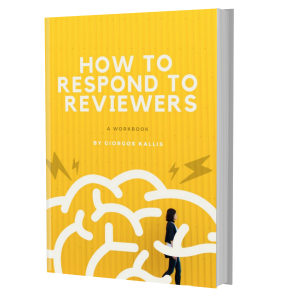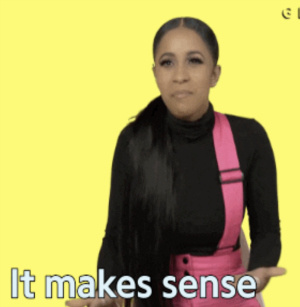How to reply to reviewers
This week I join forces with Vassilis Kostakis, a professor of P2P governance at Tallinn University and Faculty Associate at Harvard University's Berkman Klein Center, to share with you some simple tips on how to respond to reviewers based on our experience. In addition, I have prepared a workbook for you, illustrating the advice of this blogpost with an example of a reply from a paper of mine that eventually got published in a top journal.
You have submitted a paper for review, and you have received reviewers' feedback. Along with the revised version of your manuscript, you have to provide a rebuttal, a letter where you explain your changes and respond to the reviewers. Editors can be demanding, and the first thing they will look at is the rigorousness of your reply. The first, and often times only thing that the reviewers will look at is your reply.
A well-written reply is then critical to have your paper accepted. Here are 9 suggestions for writing your rebuttal:
-
Have a clear structure.
For example:
Title (e.g., ‘Name or code/nr of the paper: Detailed Response to the Editor and the Reviewers’)
Intro text (see below)Reviewer #1
Reviewer's #1 comment 1 in blue letters
Your response in black letters
and so on...
Reviewer #2
Reviewer's #2 comment 1 in blue letters
Your response 1 in black letters
and so on...
Concluding text (see below)
Some people also provide tables with a summary of their revisions. Column 1 has an excerpt from the words of the reviewer concerning the critique addressed. Column 2 has a brief summary of the response and Column 3 an indication of the page/lines in the revised text where the reviewer can find the changes. Each row then summarizes how and where a critique or suggestion is addressed.
-
Start with a kind intro thanking editor and reviewers.
For example:
‘We wish to thank you all for your constructive comments in this second round of review. Your comments provided valuable insights to refine its contents and analysis. In this document, we try to address the issues raised as best as possible.’
Sometimes the Editor may have written to you his or her own suggestions for your revisions, often highlighting the core changes demanded by the reviewers. You might want then in the introduction to give a brief statement on the main changes you did (you can do this even if the Editor did not ask for that – he or she will be the first and most important reader of your reply, and is good to give a summary of what you changed).
For example:
‘The revised version is significantly shorter. We addressed the concern of reviewer 1 and removed the section on political ecology, and provided additional empirical material as reviewer 2 requested. We also now have an expanded discussion section where we engage in more detail with the work of Feng et al, as you advised us to’.
-
Be precise and respond to every single comment.
Do not ignore a reviewer’s comment. And do not say ‘this is addressed in the paper’, without really having addressed it (if you are not 100% sure that you addressed it, then you haven’t).
Do not evade a reviewer’s comment. Don’t just say ‘this issue is now addressed in the revised version of the paper’, without really explaining how precisely you addressed it. Give a brief summary in the reply of how you addressed the concern, and if necessary indicate the lines in the new text with the relevant revisions, or copy paste relevant parts of the new text in the reply.
Again, it is not sufficient to just say ‘this is now addressed, see line xxx’. You need to engage with the substantive argument of the reviewer and give a substantive, intellectual-analytical defense of what you changed and why (or why not). The better you respond, the more you convince the Editor and your reviewers that you understand what they are telling you, and that you are in command of your material (think of it as a PhD defense, or a Q&A after a lecture). The more you seem to want to avoid the criticism, or be vague about what you did and where, the more suspicious they will get that you don’t get it and you haven’t really changed the paper. If they then read your paper, and it seems very similar to their recollection of the first version, you risk a rejection.
-
Challenge the reviewers, if need be
If you do not understand a comment, say it. The reviewers are researchers like you. Maybe they do not express themselves well, maybe they misunderstood you because they do not know your material that well. Tell them politely. You can kindly note for example, ‘we are afraid that we are not sure whether we fully understand this comment.’
Explain though next why you do not understand it – if the point is clear and you do not understand it, then the reviewer or the Editor might think you are not ready to publish a paper. Write to the reviewers keeping the Editor in the back of your mind, as at some point he or she might have to adjudicate a difference you have with the reviewers. Make sure that the Editor will agree with you that the comment of the reviewer was not clear.
Sometimes a reviewer may not be precise. He or she might tell you that this section is unclear or the language imperfect, but give no details. Demand from them to do their job well. Ask them to specify what is unclear, or to give you examples of problems with your language that you can fix (if you could spot where your language was wrong, you would have fixed it already).
If you do not agree with a suggested change, and you do not want to do it, say it, but defend well your position. Show that you understand what the reviewer is asking you to do and why, and then defend why you think it is better not to do it. Remain open though to do it in a next round of revisions, if the reviewer convinces you that it will be for the better.
Sometimes the reviewers might ask for changes that require substantially more words. Again, you can refuse and write something like ‘Thank you for this comment. Unfortunately, we do not have enough space to deal with this issue in depth (our manuscript contains as it is more than 10,000 words) and, thus, this particular topic will be discussed in detail in future work (already some of the authors have been working on the topic). However, we have tried to...’.
-
Show some ‘blood’
If the revisions are major, then the reviewers will want to see that you did do major changes and that you put substantial work in revising the paper. If the revisions are major, and your reply is short, suggesting minor modifications only, responding only to specific points or just adding some references and changing a sentence here and there, the reviewers may be tempted to reject your paper.
Deleting a substantial part of your paper (a page or a section), changing sequence of some arguments or sections, engaging in depth with a new literature, adding a research question, rewriting introduction and conclusions, etc. These are all signs of ‘blood’ - you did get the message and you did major changes.
-
Exploit differences between reviewers to your benefit.
Sometime one reviewer will ask you to take this section or body of theory out of your paper, while the other will ask you to expand it. Decide what you want to do, and use the arguments of the reviewer you chose to follow, in order to respond to the reviewer, you won’t follow.
Be kind though to the reviewer you ignore and show that you understand why they asked you to do what they did. E.g. ‘We understand that our section on political ecology was not well substantiated and lacked grounding on the relevant literature. Rather than removing it though, as you suggest, we have chosen to follow the advice of reviewer 2, who suggests to expand it by engaging with recent literature on the political ecology of health’.
-
Incorporate most, if not all of the additional literature the reviewers suggest.
Reviewers will often tell you that you didn't read this or that, or that you should engage with this or that work (very often their own, which they were disappointed to see that you didn’t come across).
Do include this additional literature in your paper. And ideally, do not just add the reference in the opportune place (the researcher who has not done this in a moment of laziness, please raise your hand!) - do look at the paper or book suggested, see what it has that is relevant to your work, and engage substantially with it in a sentence or two in your revised version (or more, if the reviewer thinks it should be more central in your overall argument/approach).
-
Highlight that you are ready to do more if your revisions are not satisfactory.
Do not be cocky and do not send a vibe that ‘I’ve done the changes you asked, are we done now?’. Instead show that you understand that this might be a long process, and that your revisions may be incomplete, and you may be asked to do more.
Include for example statements that indicate that your reply is part of a dialogue that might continue. ‘If the reviewer is not satisfied, we can consider including more literature on the methodology section and give more details of our ethnographic approach’. Or ‘..in case the language is still not clear enough, we would be grateful if in the next round of revisions, you point to us the specific sentences we should improve’.
-
Finish your reply with a kind outro.
Reviewers are doing voluntary work. They are not your enemies (even if sometimes they can be jerks). Appreciate the help they are offering to improve your work.
For example, finish with a nice:
‘Once again, we thank you for the time you put in reviewing our paper and look forward to meeting your expectations. Since your inputs have been precious, in the eventuality of a publication, we would like to acknowledge your contribution explicitly.
The authors’
For a detailed example of how to put these principles into practice download the workbook below.
What was the greatest insight you gained from reading this article? Leave your comments below.
















